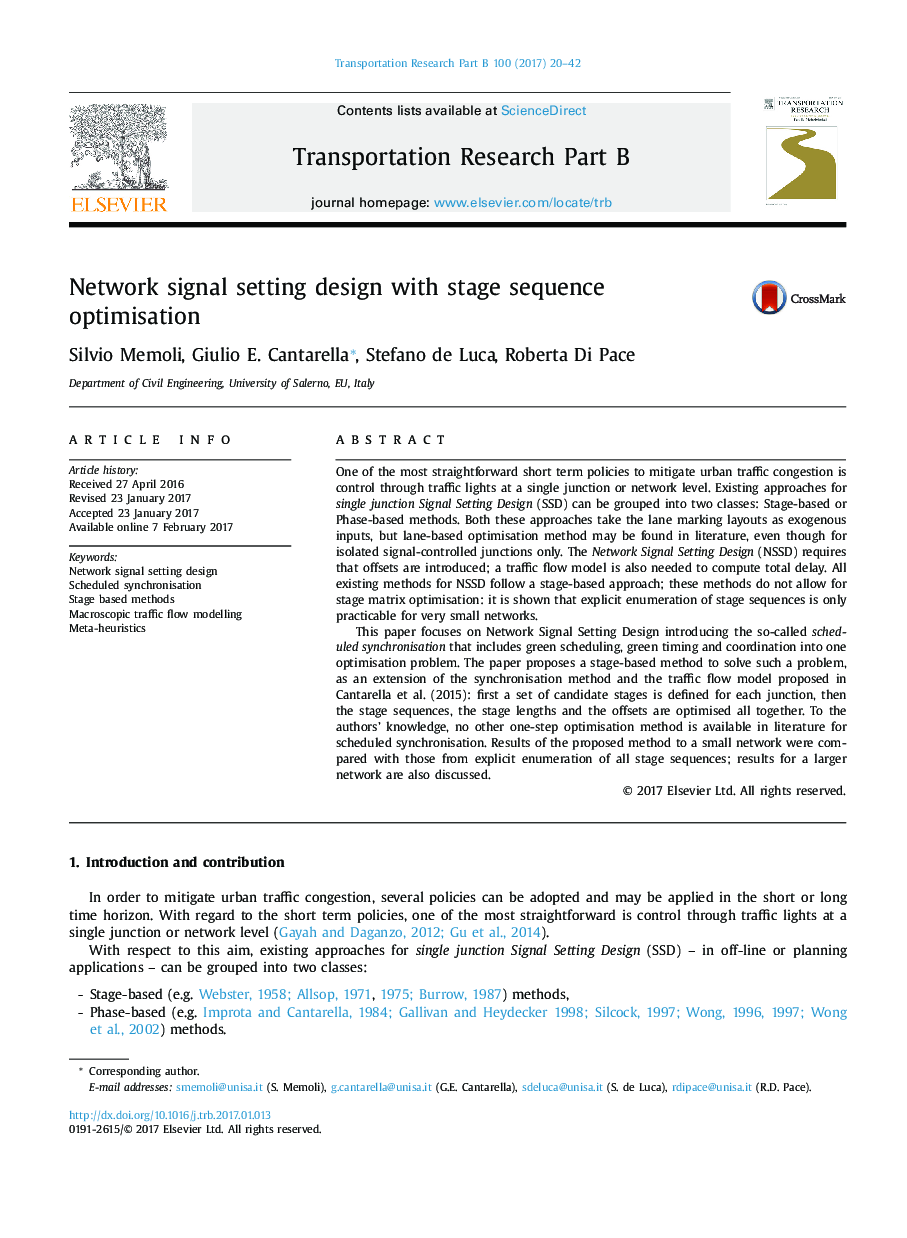| Article ID | Journal | Published Year | Pages | File Type |
|---|---|---|---|---|
| 5127029 | Transportation Research Part B: Methodological | 2017 | 23 Pages |
â¢Stage sequence may greatly affect the performance of a network of signalised junctions.â¢Scheduled synchronisation optimises stage sequence and lengths and offsets for a junction network.â¢CENEO is the first method available in literature for scheduled synchronisation.â¢CENEO is an efficient and effective method suitable for large scale application.
One of the most straightforward short term policies to mitigate urban traffic congestion is control through traffic lights at a single junction or network level. Existing approaches for single junction Signal Setting Design (SSD) can be grouped into two classes: Stage-based or Phase-based methods. Both these approaches take the lane marking layouts as exogenous inputs, but lane-based optimisation method may be found in literature, even though for isolated signal-controlled junctions only. The Network Signal Setting Design (NSSD) requires that offsets are introduced; a traffic flow model is also needed to compute total delay. All existing methods for NSSD follow a stage-based approach; these methods do not allow for stage matrix optimisation: it is shown that explicit enumeration of stage sequences is only practicable for very small networks.This paper focuses on Network Signal Setting Design introducing the so-called scheduled synchronisation that includes green scheduling, green timing and coordination into one optimisation problem. The paper proposes a stage-based method to solve such a problem, as an extension of the synchronisation method and the traffic flow model proposed in Cantarella et al. (2015): first a set of candidate stages is defined for each junction, then the stage sequences, the stage lengths and the offsets are optimised all together. To the authors' knowledge, no other one-step optimisation method is available in literature for scheduled synchronisation. Results of the proposed method to a small network were compared with those from explicit enumeration of all stage sequences; results for a larger network are also discussed.
